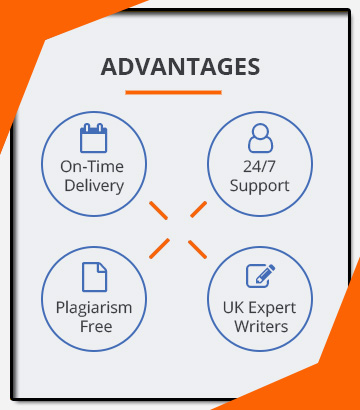Faculty of Arts, Business and Social Sciences –Assessment Brief for Students – 2020/21
|
Module code and title
|
4MK007 Principles of Marketing
|
|
Module leader
|
|
|
Diet
|
First Attempt
|
|
Assessment type
|
Individual Report
|
|
Submission date
|
|
|
Submission method
|
Canvas
|
|
Assessment limits
|
Word count: 2500 words+/- 10%. The word count does not include information provided in the appendices or references.
|
|
Assessment weighting
|
100%
|
|
|
This assessment is testing Module Learning outcomes
|
Tick if tested here
|
|
LO1
|
Demonstrate an ability to make sense of marketing and customer facing activity
|
ü
|
|
LO2
|
Demonstrate an ability to understand and explain marketing processes
|
ü
|
|
LO3
|
Demonstrate an ability to understand and use conceptual models and theoretical insights to analyse, evaluate, explain and comment on marketing activities
|
ü
|
|
Assessmentbrief(if appropriate, please refer to module assessment briefing document)
|
|
Write a report whichevaluates The Spice Kitchen’smarketing activities and approach. Your report should draw on relevant marketing theory and provide a critical commentaryof the organisation and its key findings.Make sure to define key terms used i.e. Marketing Mix, STP etc. You should ensure you reference your work using Cite them right Harvard. Click here for guidance on referencing.
The report should be based on the use of the following analytical techniques:
Introduction: (Background to your organisation)100 words
External PESTLE Analysis (Make sure to include headings for each PESTLE factor:Using the PESTLE framework, conduct an external analysis of sector in which the company operates, highlighting key factors which may be a threat or an opportunity for the organisation going forward. (600 words)
SWOT Analysis:Using the SWOT framework, provide an internal analysis of the organisation’sstrengths, weaknesses, opportunities and threats in successfully meeting the needs and wants of the target consumer segment. Review the implications of your findings for the Spice Kitchen. As appropriate, you should summarise the effectiveness of current marketing arrangements and indicate areas for further development. (600 words)
Marketing Mix Analysis:Using the 7P Marketing Mix framework, detail how marketing tactics could be employed to attract one key consumer segment.Your report should include the discussion and application of theoretical concepts e.g ‘customer segmentation’(500 words)
STP Strategy:Using the STP framework, describe the organisation’sSegmentation, Targeting and Positioning approach, identifying one target consumer and the specific needs and wants of that segment. You should clearly apply Kotler’s (1984) DAMP model to your targeting strategy, you must also include a perceptual map for your organisation and its competitors (500 words)
Recommendations – 100 words
Conclusion– 100 words
References
You should provide evidence of wider reading and market research sources to enhance your work, with clear Harvard referencing throughout. Your market research sources could include: MarketLine, Mintel, BBC. The Guardian, and other credible sources (Do not use Wikipedia, Tutor4U, MBA Skool or UK essays).
Appendices. You can provide more information on some of the sections above and attach as appendices.
- SWOT analysis
- PESTLE analysis
- 7Ps Marketing Mix
The evidence gathered through the application of these analytical techniques on the businessshould be placed in the appendices with their key findings in your main report. Theappendices provide the evidence base in support of the main report.
Elements which are not included in the assessment word count limit are: the title and contents page, models, diagrams, tables, reference list and appendices. The appendices should be clearly numbered and signposted in the main text of the assignment report.
PLEASE SEE BELOW FOR A SUGGESTED STRUCTURE OF YOUR REPORT
|
|
Assessment Criteria(The actual assessment components for this assignment)
|
|
Criteria
|
Weighting (If applicable)
|
|
Provide evidence of thorough research into relevant theories, drawing on a range of additional academic and market research sources.
|
20
|
|
Demonstrate understanding of key concepts and the implications of them for the organisation.
|
20
|
|
Apply analytical techniques to the organisation, enabling a critical evaluation of its current marketing activities based on a clear evidence base.
|
35
|
|
Quality of appendices
|
15
|
|
Present a well-structured argument, with clarity of report writing. Good quality of referenced material and referencing style using the Harvard referencing system.
|
10
|
|
Pass mark
|
Undergraduate 40%
|
|
Performance descriptors in use;
- University of Wolverhampton Yes X No
|
|
Return of assessments
(Instructions for return / collection of assessments)
|
Feedback will be provided with 4 working weeks of the submission date
|
Additional information for students
The University’s Learning Information Services have produced a series of guides covering a range of topics to support your studies, and develop your academic skills including a guide to academic referencinghttp://www.wlv.ac.uk/lib/skills_for_learning/study_guides.aspx
Your module guide and course handbook contain additional and important information regarding;
- The required referencing style for your assignment.*
Whilst many modules require referencing in accordance with the Harvard Referencing convention, some modules – for example those within the School of Law – require Oxford Referencing. Please familiarise yourself with the requirements of your module.
- Submission of your work
- Marking, feedback and moderation in accordance with the University of Wolverhampton Assessment Handbook
- Extensions on submission dates *
- Additional support *
- Academic conduct with regards to cheating, collusion or plagiarism *
- Links to appropriate sources of relevant information *
* Further information regarding these and other policies can be accessed through your student portal on wlv.ac.uk.
Always keep a copy of your work and a file of working papers
The requirement to keep a file of working papers is important. There may be circumstances where it is difficult to arrive at a mark for your work. If this is the case, you may be asked to submit your file and possibly meet with your tutor to answer questions on your submission.
When you submit your work you will be required to sign an important declaration confirming that:
- The submission is your own work
- Any material you have used has been acknowledged and appropriately referenced
- You have not allowed another student to have access to your work
- The work has not been submitted previously.
The following information is important when:
- Preparing for your assignment
- Checking your work before you submit it
- Interpreting feedback on your work after marking.
Module Learning Outcomes
Module Learning Outcomes are specific to this module, and are set when the module was validated.
Assessment Criteria
The module Learning Outcomes tested by this assignment, and precise criteria against which your work will be marked are outlined in your assessment brief.
Performance Descriptors
Performance descriptors indicate how marks will be arrived at against each of the assessment criteria. The descriptors indicate the likely characteristics of work that is marked within the percentage bands indicated.
To help you further:
- Re-sit opportunities are available for students who are unable to take the first sit opportunity, or who need to re take any component.
- Refer to the VLEtopic for contact details of your module leader/tutor, tutorial inputs, recommended reading and other sources, etc. Resit details will also appear on the VLE module topic.
The University’s Learning Information Services offer support and guidance to help you with your studies and develop your academic skills http://www.wlv.ac.uk/lib/skills_for_learning/study_guides.aspx
The structure of your report
Here is a possible structure for your report which you may wish to follow.
Part one of the report: Introduction to your report
In the first part of your report, you should briefly set out the focus of your report and introduce the Spice Kitchen. You should briefly explain how you went about collecting evidence for your report. You should also set the scene theoretically by summarising changing conceptions of marketing in recent years.
Part two of the report: External analysis of the sector using a PESTEL framework
Using a PESTEL framework, conduct an external analysis of thesector(business context), highlighting key factors which may be a threat or an opportunity for the organisation going forward.
This part of your report should summarise your understanding of key concepts relating to the sector. You should then explain how you undertook the analysis and identify the key factors that emerged from it. The completed PESTEL itself should be placed as an appendix item.
Part three of the report: Segmentation, Targeting and Positioning Strategy
This part of your report should show your understanding of key concepts relating to consumers and end-users. You should then briefly discuss theories of market segmentation, targeting and positioning before applying the STP framework to the Spice Kitchen.You should then explain how you undertook the analysis and identify the key lessons that emerged from it.
Part four of the report: The marketing mix
This part of your report should show your understanding of key concepts relating to marketing activities. You should explain how you used the 7P Marketing Mix framework to analyse the Spice Kitchen’smarketing activitiesand summarise the key findings. Your completed 7P marketing mix template itself should be placed as an appendix item.
Part five of the report: Provide an internal analysis using a SWOT
This part of the report should bring together the findings from the previous analysis and, using the SWOT framework, provide an internal analysis of the Spice Kitchen’sstrengths, weaknesses, opportunities and threats in successfully meeting the needs and wants of the target consumer segment. As appropriate, you should summarise the effectiveness of current marketing arrangements and indicate areas for further development. The completed SWOT template should be placed in the appendix.
Part six: Recommendations and conclusion
Finally, you should summarise the key findings from your analyses and make some recommendations in terms of the Spice Kitchen’s marketing approach. You should also comment on your conduct of the evaluation, identifying any limitations in the evidence gathered and techniques used.
Performance Descriptors (A to F)
Performance descriptors indicate how marks will be arrived at against each of the above criteria. The descriptors indicate the likely characteristics of work that is marked within the percentage bands indicated. See table below.
Performance Descriptors – Level 4

